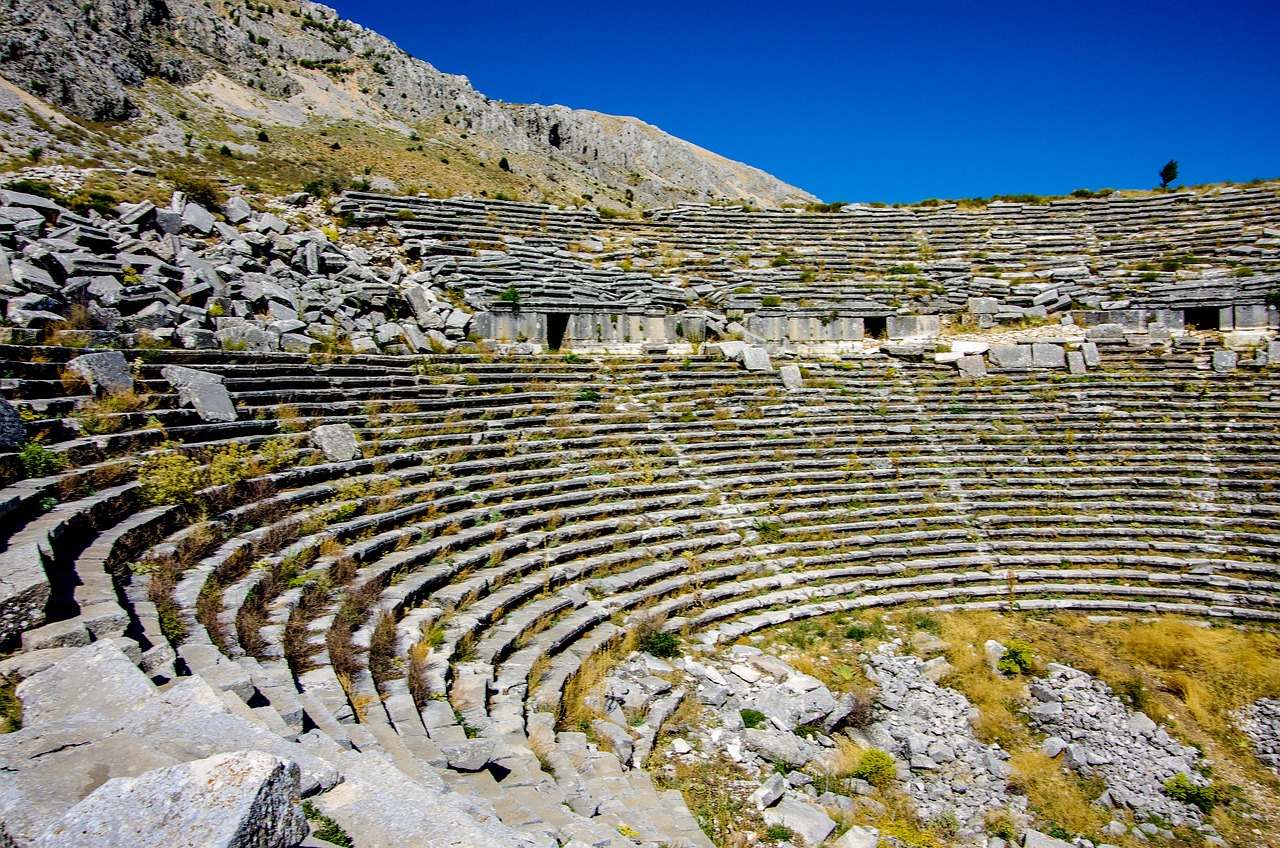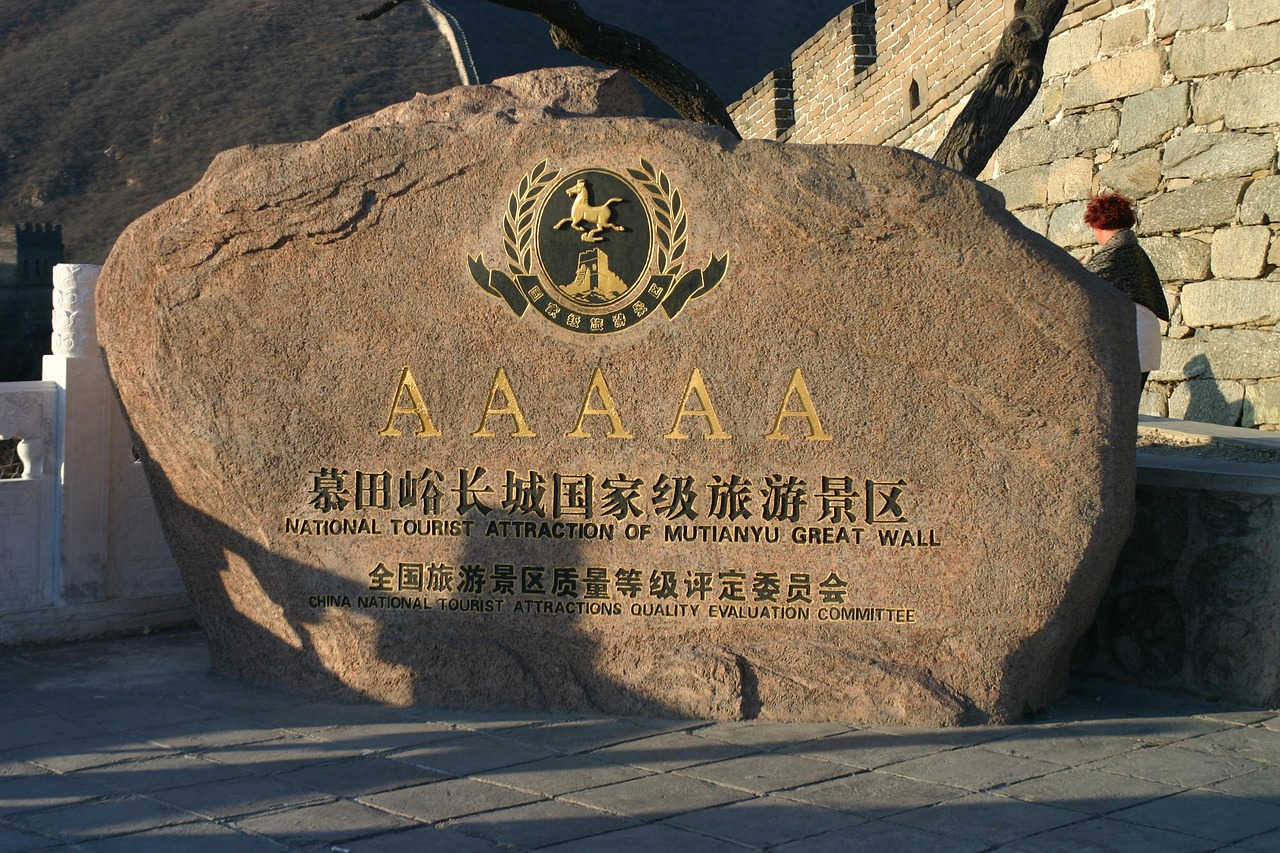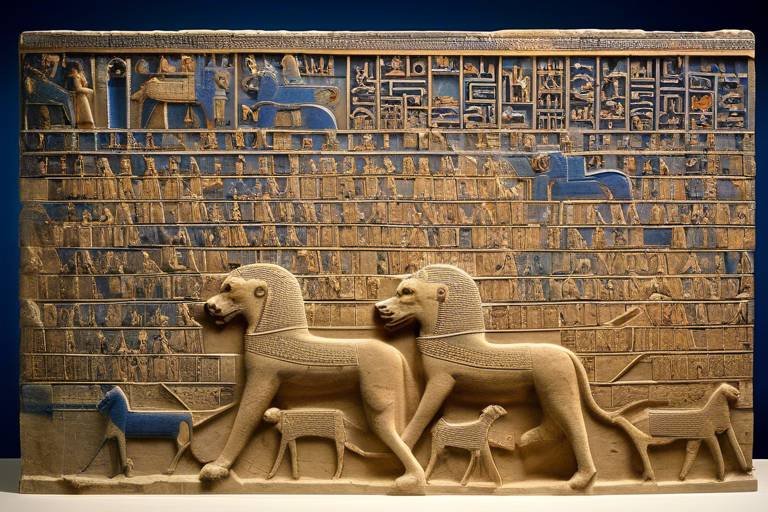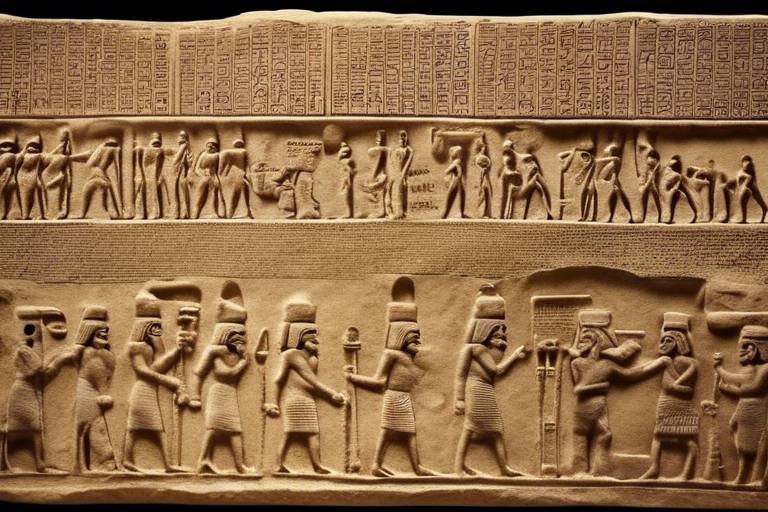What Happened to the Ancient Assyrians?
The ancient Assyrians, once a dominant force in Mesopotamia, met a fate that led to the eventual disappearance of their powerful civilization. Known for their military prowess and advanced culture, the Assyrians left a lasting impact on history. However, the question remains: What happened to the ancient Assyrians?

Overview of the Assyrian Empire
The Ancient Assyrians were a remarkable civilization that thrived in the heart of Mesopotamia, showcasing unparalleled military strength and a sophisticated culture that left a lasting impact on history. Known for their fierce warriors and elaborate cities, the Assyrians rose to power and dominated the ancient world with their strategic prowess.
At the height of their reign, the Assyrian Empire stood as one of the most formidable empires, stretching its influence across vast territories in the Middle East. Their military campaigns were ruthless and efficient, allowing them to conquer lands far and wide, instilling fear in their enemies and admiration in their subjects.
However, the glory of the Assyrians was not eternal. Various factors contributed to their eventual decline, including internal conflicts, external invasions, and uprisings from subjugated peoples. The once mighty empire began to crumble under the weight of these challenges, leading to its eventual downfall.
Despite their military prowess, the Assyrians were not solely defined by conquest. They were also pioneers in cultural achievements, leaving behind a legacy of art, architecture, and literature that showcased their creativity and sophistication. Their contributions to the cultural landscape of the ancient world were profound and enduring.
Even after the fall of their empire, the legacy of the Assyrians endured through their cultural influence on later civilizations. Their architectural innovations, artistic traditions, and literary works continued to shape the course of history, leaving an indelible mark on the world.
In recent times, the rediscovery of ancient Assyrian cities and artifacts by archaeologists has provided new insights into this enigmatic civilization. Through these discoveries, scholars have been able to piece together the puzzle of Assyrian life and shed light on their customs, beliefs, and daily existence.
Following the collapse of their empire, the Assyrians faced a diaspora, scattering across the globe and forming communities that sought to preserve their unique cultural identity. Despite the challenges of displacement, modern Assyrians have worked tirelessly to uphold their heritage and traditions, ensuring that the legacy of their ancestors lives on.
However, the preservation of Assyrian history is not without its challenges. Political instability and conflicts in the region pose significant threats to the conservation of ancient sites and artifacts, endangering the rich tapestry of Assyrian history. Efforts to safeguard this heritage face obstacles that must be overcome to ensure the continued legacy of the Assyrians.

Causes of the Assyrian Decline
When exploring the causes behind the decline of the mighty Assyrian Empire, it becomes evident that a combination of internal conflicts and external pressures played a significant role in its downfall. The once powerful empire faced a series of challenges that ultimately led to its collapse.
Internal strife within the Assyrian Empire weakened its foundations. The constant power struggles among the ruling elite and the lack of a clear succession plan created instability within the empire. This internal turmoil sapped the strength of the Assyrian state, making it vulnerable to external threats.
External invasions also hastened the decline of the Assyrian Empire. The relentless expansion of the empire had stirred resentment among neighboring civilizations, leading to frequent conflicts and invasions. The Assyrians' aggressive military tactics, while effective in conquest, also made them a target for coalitions of rival powers seeking to curb their influence.
Rebellions from subjected peoples further strained the Assyrian Empire. The conquered territories, often ruled with an iron fist, eventually rose up against their oppressors. The Assyrians' harsh treatment of subjugated populations fueled resentment and resistance, contributing to the fragmentation of their once vast empire.
In summary, a combination of internal discord, external aggression, and rebellions from subjected peoples all played a role in the decline of the Assyrian Empire. These factors, coupled with the inherent challenges of maintaining a vast empire, ultimately led to the downfall of this ancient civilization.

Assyrian Military Tactics and Conquests
The ancient Assyrians were a powerful civilization in Mesopotamia, known for their military prowess and advanced culture. However, their empire eventually fell, leading to the disappearance of this once dominant society. Explore the fate of the ancient Assyrians in this article.
The Assyrian Empire was one of the most formidable empires of the ancient world, stretching across the Middle East and dominating other civilizations. Learn about the rise and peak of Assyrian power.
Various factors contributed to the decline of the Assyrian Empire, including internal strife, external invasions, and rebellions from subjected peoples. Delve into the reasons behind the downfall of this great civilization.
The Assyrians were renowned for their military strategies and brutal conquests, which helped them expand their empire. Their military tactics were characterized by a combination of disciplined infantry, cavalry, and siege warfare. The use of iron weapons and chariots gave them a significant advantage on the battlefield.
One of their most famous military tactics was the use of psychological warfare, instilling fear in their enemies through brutal displays of violence and cruelty. This psychological warfare, combined with their superior military organization, allowed the Assyrians to conquer vast territories and establish their dominance in the region.
Moreover, the Assyrians were pioneers in siege warfare, employing advanced techniques to breach fortified cities and strongholds. They used battering rams, siege towers, and tunnels to overcome enemy defenses, showcasing their ingenuity and military prowess.
Beyond their military might, the Assyrians made significant contributions to art, architecture, and literature. Explore the rich cultural heritage and achievements of the ancient Assyrians.
Although the Assyrian Empire fell, its legacy lived on through its cultural influence and the impact it had on later civilizations. Learn about how the Assyrians continue to shape history even after their decline.
In modern times, archaeologists have unearthed ancient Assyrian cities and artifacts, shedding new light on this once enigmatic civilization. Explore the discoveries that have deepened our understanding of the Assyrians.
Following the fall of their empire, the Assyrians dispersed across the world, leading to a diaspora community with a distinct cultural identity. Learn about the modern Assyrian diaspora and their efforts to preserve their heritage.
Despite ongoing efforts to study and preserve Assyrian history, challenges such as political instability and conflict in the region pose threats to the conservation of this ancient civilization's legacy. Explore the obstacles faced in safeguarding Assyrian history.
Q: What were some key factors that led to the decline of the Assyrian Empire?
A: The decline of the Assyrian Empire was influenced by internal strife, external invasions, and rebellions from subjected peoples, which weakened the empire over time.
Q: How did the Assyrians contribute to art and literature?
A: The Assyrians were known for their intricate relief carvings, palace decorations, and epic poetry, showcasing their artistic and literary achievements.
Q: What is the significance of the modern Assyrian diaspora?
A: The modern Assyrian diaspora plays a crucial role in preserving the cultural heritage and identity of the ancient Assyrians, ensuring that their legacy endures across generations.

Assyrian Culture and Achievements
The ancient Assyrians were not only known for their military might but also for their rich cultural achievements that left a lasting impact on the ancient world. Their culture was a vibrant tapestry of art, architecture, and literature that showcased their advanced civilization.
One of the most notable aspects of Assyrian culture was their impressive artistry, particularly in relief sculptures and palace decorations. These intricate artworks depicted scenes of battles, hunting expeditions, and religious ceremonies, providing valuable insights into Assyrian life and beliefs.
Furthermore, the Assyrians were pioneers in architectural innovation, constructing grand palaces adorned with elaborate decorations and intricate carvings. The city of Nineveh, the capital of the Assyrian Empire, boasted magnificent structures that reflected the empire's wealth and power.
In the realm of literature, the Assyrians made significant contributions to the development of cuneiform writing, one of the earliest forms of writing in human history. Their literary works included epic poems, royal inscriptions, and administrative documents that provided a glimpse into the administrative prowess of the Assyrian rulers.
Moreover, the Assyrians were patrons of learning and knowledge, establishing libraries that housed a vast collection of clay tablets containing various texts on subjects ranging from astronomy to medicine. These libraries served as centers of scholarship and intellectual exchange in the ancient world.
Overall, the cultural achievements of the ancient Assyrians were a testament to their sophisticated civilization and enduring legacy that continues to fascinate historians and archaeologists to this day.

Legacy of the Assyrians
The legacy of the Assyrians continues to resonate through the annals of history, leaving an indelible mark on the civilizations that followed. Despite the eventual decline of their empire, the Assyrians left behind a legacy of innovation, artistry, and military prowess that influenced the course of Mesopotamian and world history.
One of the most enduring legacies of the Assyrians lies in their contributions to art and architecture. The Assyrians were master craftsmen, known for their intricate bas-reliefs, colossal statues, and majestic palaces. These artistic achievements not only showcased the wealth and power of the empire but also set a standard for artistic expression that influenced later cultures.
Furthermore, the Assyrians made significant strides in literature, with their cuneiform tablets preserving epic tales, religious texts, and administrative records. These writings provide valuable insights into the daily life, beliefs, and governance of the ancient Assyrians, offering a window into a bygone era.
Another crucial aspect of the Assyrian legacy is their military tactics and organizational skills. The Assyrians revolutionized warfare with their use of siege engines, cavalry, and disciplined infantry, setting a template for future military conquests. Their ruthless efficiency in battle and strategic brilliance made them a formidable force to be reckoned with.
Moreover, the Assyrians' administrative innovations, such as the use of governors and a centralized bureaucracy, laid the groundwork for efficient governance and imperial rule. Their system of tribute collection and infrastructure development facilitated the management of a vast empire, ensuring stability and prosperity for a time.
As time passed and the Assyrian Empire faded into history, its legacy endured through the cultural diffusion and assimilation of Assyrian customs, beliefs, and practices into succeeding civilizations. The echoes of Assyrian influence can be seen in the art, architecture, and literature of later societies, showcasing the enduring impact of this once-mighty empire.

Rediscovery of Assyrian Civilization
After centuries of obscurity, the ancient Assyrian civilization began to resurface through the dedicated efforts of archaeologists and historians. The rediscovery of Assyrian cities and artifacts has provided valuable insights into the culture, society, and achievements of this once mighty empire. Through meticulous excavation and analysis, researchers have pieced together the puzzle of Assyrian civilization, uncovering a wealth of information that was previously lost to time.
One of the most significant archaeological finds related to the Assyrians was the discovery of the ancient city of Nineveh. Excavations at Nineveh revealed a wealth of artifacts, including intricate reliefs, clay tablets, and architectural remains that offered a glimpse into the daily life and beliefs of the Assyrian people. These findings have revolutionized our understanding of Assyrian culture and history, shedding light on their art, religion, and governance.
Furthermore, the decipherment of cuneiform script has played a crucial role in unlocking the secrets of Assyrian civilization. By translating inscriptions on clay tablets and monuments, scholars have been able to reconstruct historical events, royal chronicles, and administrative records from the Assyrian era. This breakthrough in decipherment has provided a direct window into the past, allowing us to delve deeper into the complexities of Assyrian society.
In addition to archaeological excavations, advancements in technology have also contributed to the rediscovery of Assyrian civilization. Through techniques such as remote sensing, aerial photography, and 3D modeling, researchers have been able to map ancient Assyrian sites with precision and detail. These innovative methods have enabled a more comprehensive study of Assyrian architecture, urban planning, and landscape, enhancing our understanding of the empire's physical environment.
The rediscovery of the Assyrian civilization continues to captivate scholars and enthusiasts alike, offering a fascinating journey into the past. As new discoveries are made and existing findings are reinterpreted, the legacy of the ancient Assyrians is being brought back to life, ensuring that their contributions to history are not forgotten.

Assyrian Diaspora and Modern Assyrian Identity
The fall of the Assyrian Empire led to a significant dispersal of the Assyrian people, resulting in what is now known as the Assyrian diaspora. Following the collapse of their once-mighty civilization, Assyrians migrated to various regions, establishing communities with a distinct cultural identity that has endured through the ages.
One of the key aspects of the Assyrian diaspora is the preservation of their heritage and traditions in foreign lands. Despite being scattered across the globe, Assyrians have maintained a strong sense of cultural pride and identity, passing down their customs from generation to generation.
Modern Assyrian communities in different parts of the world have worked tirelessly to uphold their traditions and language, ensuring that their unique identity remains vibrant and relevant in contemporary society. Through cultural events, language classes, and community gatherings, Assyrians strive to keep their heritage alive.
Despite the challenges of living away from their ancestral homeland, Assyrians have forged a cohesive community that transcends geographical boundaries. The modern Assyrian identity is a testament to their resilience and determination to preserve their rich cultural legacy in the face of adversity.

Challenges in Preserving Assyrian History
Preserving Assyrian history presents a myriad of challenges that stem from the complexities of the region and the legacy of conflict. Political instability in the Middle East has hindered efforts to safeguard Assyrian artifacts and sites, making them vulnerable to looting and destruction. The ongoing conflicts in areas once inhabited by the Assyrians pose a significant threat to the preservation of their historical heritage.
Furthermore, the lack of resources and funding for archaeological research and conservation efforts has impeded progress in documenting and protecting Assyrian history. Limited access to technology and expertise in certain regions has also hampered the ability to properly study and preserve the remnants of this ancient civilization.
The global diaspora of Assyrians has created challenges in coordinating efforts to preserve their cultural legacy. With communities scattered across different countries, collaboration and coordination in conservation initiatives can be difficult to achieve. The dispersion of Assyrians has also led to a loss of traditional knowledge and practices, further complicating efforts to maintain their historical identity.
Moreover, the illicit trade in antiquities poses a significant challenge to the preservation of Assyrian history. Smugglers and black-market dealers exploit the demand for ancient artifacts, leading to the loss of valuable pieces of Assyrian heritage. The illegal excavation and sale of antiquities not only erode the historical record but also perpetuate the cycle of looting and destruction.
In the face of these challenges, efforts to preserve Assyrian history require a multi-faceted approach that addresses the root causes of vulnerability and promotes international cooperation. By raising awareness about the importance of safeguarding Assyrian heritage, advocating for stronger legal protections, and investing in education and training for conservation efforts, progress can be made in ensuring the survival of this ancient civilization's legacy for future generations.
Frequently Asked Questions
- What led to the decline of the Assyrian Empire?
The decline of the Assyrian Empire was influenced by a combination of internal conflicts, external invasions, and rebellions from subjected peoples. These factors weakened the empire over time, ultimately leading to its downfall.
- What were the military tactics that made the Assyrians powerful?
The Assyrians were known for their ruthless military strategies, including siege warfare, cavalry units, and the use of terror tactics to instill fear in their enemies. These tactics allowed them to conquer vast territories and establish dominance in the ancient world.
- What were some of the cultural achievements of the ancient Assyrians?
Aside from their military prowess, the ancient Assyrians made significant contributions to art, architecture, and literature. They were skilled craftsmen, known for their intricate carvings, impressive palaces, and epic literary works that reflected their rich cultural heritage.
- How is the legacy of the Assyrians preserved today?
Despite the fall of the Assyrian Empire, their legacy lives on through their cultural influence on later civilizations and the efforts of modern Assyrians to preserve their heritage. Museums, academic research, and cultural organizations play a vital role in safeguarding the history of the ancient Assyrians.
- What challenges exist in studying and preserving Assyrian history?
Political instability, conflict in the region, and the destruction of archaeological sites pose significant challenges to the preservation of Assyrian history. Efforts to document and protect this ancient civilization's legacy face obstacles that require global attention and support.



















